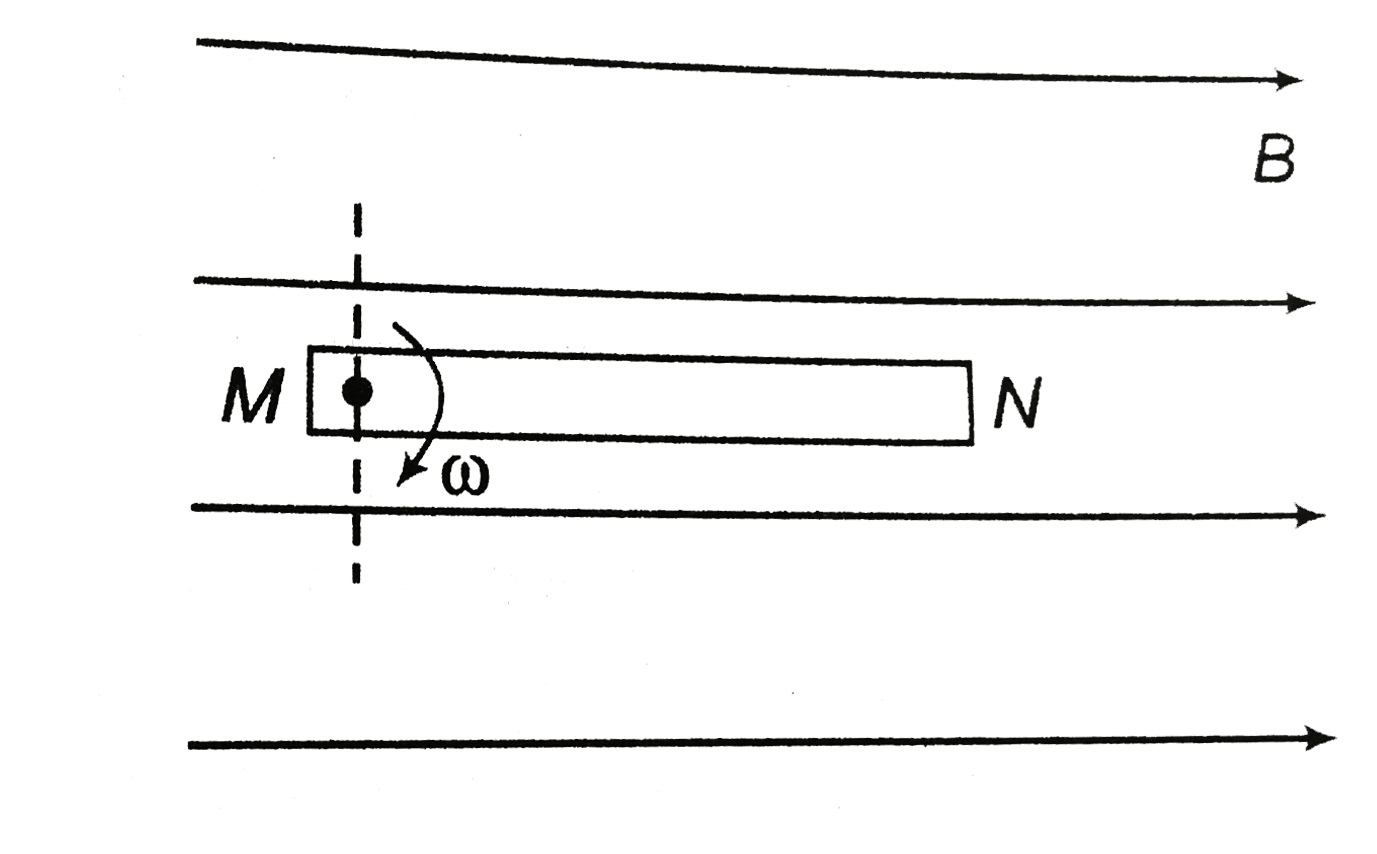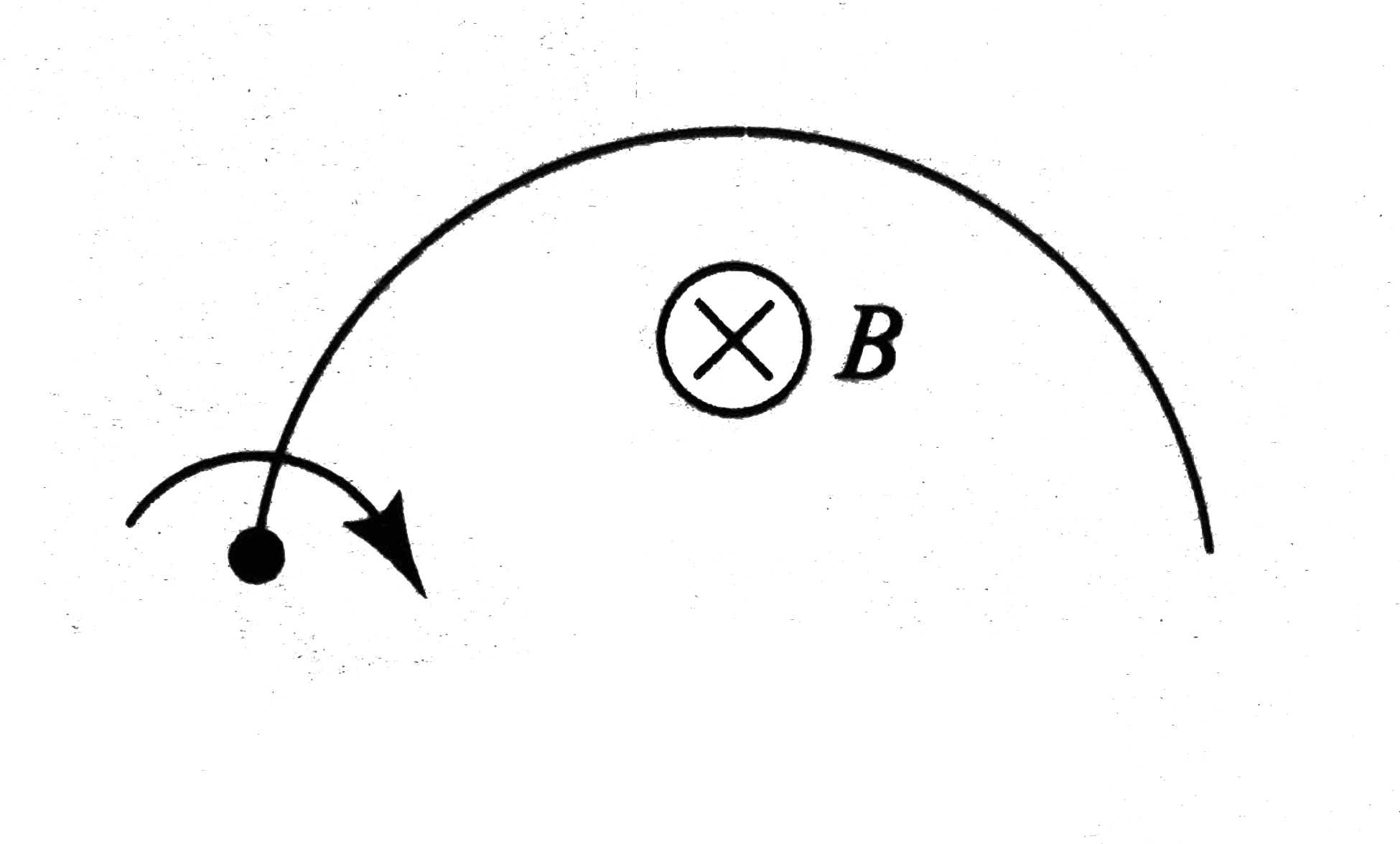A copper rod of length l is rotated about one end perpendicular to the magnetic field B with constant angular velocity ω . The induced e.m.f between the two ends is
12Bωl2
34Bωl2
Bωl2
2Bωl2
The correct Answer is:a
To find the induced e.m.f. (electromotive force) between the two ends of a rotating copper rod in a magnetic field, we can follow these steps:
1. Understand the Setup:
- We have a copper rod of length L that is rotated about one end.
- The rod is perpendicular to a uniform magnetic field B.
- The rod is rotated with a constant angular velocity ω.
2. Identify the Velocity of a Point on the Rod:
- Consider a small element of the rod at a distance x from the pivot (the end about which the rod is rotating).
- The linear velocity V of this element due to rotation is given by:
V=ωx
3. Calculate the Induced Electric Field:
- The induced electric field E at this point in the rod can be expressed using the formula:
E=BV=B(ωx)=Bωx
4. Determine the Potential Difference:
- The potential difference dV across a small segment dx of the rod can be expressed as:
dV=E⋅dx=(Bωx)⋅dx
5. Integrate to Find Total Potential Difference:
- To find the total potential difference V between the two ends of the rod, we need to integrate dV from x=0 to x=L:
V=∫L0dV=∫L0Bωxdx
- Performing the integration:
V=Bω∫L0xdx=Bω(x22)L0=Bω(L22)
- Thus, we find:
V=12BωL2
6. Conclusion:
- The induced e.m.f. between the two ends of the rod is:
Induced e.m.f.=12BωL2
Final Answer:
The induced e.m.f. between the two ends of the copper rod is 12BωL2.
- We have a copper rod of length L that is rotated about one end.
- The rod is perpendicular to a uniform magnetic field B.
- The rod is rotated with a constant angular velocity ω.
- Consider a small element of the rod at a distance x from the pivot (the end about which the rod is rotating).
- The linear velocity V of this element due to rotation is given by:
V=ωx
- The induced electric field E at this point in the rod can be expressed using the formula:
E=BV=B(ωx)=Bωx
- The potential difference dV across a small segment dx of the rod can be expressed as:
dV=E⋅dx=(Bωx)⋅dx
- To find the total potential difference V between the two ends of the rod, we need to integrate dV from x=0 to x=L:
V=∫L0dV=∫L0Bωxdx
- Performing the integration:
V=Bω∫L0xdx=Bω(x22)L0=Bω(L22)
- Thus, we find:
V=12BωL2
- The induced e.m.f. between the two ends of the rod is:
Induced e.m.f.=12BωL2
The induced e.m.f. between the two ends of the copper rod is 12BωL2.
Topper's Solved these Questions
- BOOK - CENGAGE PHYSICS ENGLISHCHAPTER - ELECTROMAGNETIC INDUCTIONEXERCISE - comprehensive type7videos
ELECTROMAGNETIC INDUCTION
- BOOK - CENGAGE PHYSICS ENGLISHCHAPTER - ELECTROMAGNETIC INDUCTIONEXERCISE - single correct answer3videos
ELECTROMAGNETIC INDUCTION
- BOOK - CENGAGE PHYSICS ENGLISHCHAPTER - ELECTROMAGNETIC INDUCTIONEXERCISE - comprehensive5videos
ELECTROMAGNETIC INDUCTION
- BOOK - CENGAGE PHYSICS ENGLISHCHAPTER - ELECTRICAL MEASURING INSTRUMENTSEXERCISE - M.C.Q2videos
ELECTRICAL MEASURING INSTRUMENTS
- BOOK - CENGAGE PHYSICS ENGLISHCHAPTER - ELECTRON,PHONTS,PHOTOELECTRIC EFFECT & X-RAYSEXERCISE - dpp 3.315videos
ELECTRON,PHONTS,PHOTOELECTRIC EFFECT & X-RAYS
Similar Questions
A copper rod of length l is rotated about one end perpendicular to the uniform magnetic field B with constant angular velocity ω . The induced e.m.f. between its two ends is
View SolutionA conducting rod is rotated about one end in a plane perpendicular to a uniform magnetic field with constant angular velocity. The correct graph between the induced emf (e) across the rod and time (t) is
View SolutionA metallic rod of length l is hinged at the point M and is rotating about an axis perpendicular to the plane of paper with a constant angular velocity ω. A uniform magnetic field of intensity B is acting in the region (as shown in the figure) parallel to the plane of paper. The potential difference between the points M and N
 View Solution
View SolutionA metallic rod of length l is hinged at the point M and is rotating about an axis perpendicular to the plane of paper with a constant angular velocity ω. A uniform magnetic field of intensity B is acting in the region (as shown in the figure) parallel to the plane of paper. The potential difference between the points M and N
 View Solution
View SolutionIn the above question if the coil rotates with a constant angular velocity ω, the EMF induced in it
View SolutionA thin circular ring of mass m and radius R is rotating about its axis perpendicular to the plane of the ring with a constant angular velocity ω. Two point particleseach of mass M are attached gently to the opposite end of a diameter of the ring. The ring now rotates, with an angular velocityω2. Then the ratiomM is
View SolutionA uniform rod mass m and length l is provided at one end and is rotated with constant angular velocity ω in a horizontal plane. Tension in the rod at a distance (√3l/2) from pivoted end is (Assume gravity free space)
View SolutionA non-conducting rod AB of length l has total charge Q . The rod is rotated about an axis passing through a point (l/3) distance from one end and perpendicular to plane of rod with constant angular speed omega, the magnetic moment of rod is
View Solutiona semicircle wire of radius R is rotated with constant angular velocity about an axis passing through one end and perpendicular to the plane of wire. There is a uniform magnetic field of strength B. The induced emf between the ends is
 View Solution
View Solutiona semicircle wire of radius R is rotated with constant angular velocity about an axis passing through one end and perpendicular to the plane of wire. There is a uniform magnetic field of strength B. The induced emf between the ends is
 View Solution
View Solution
